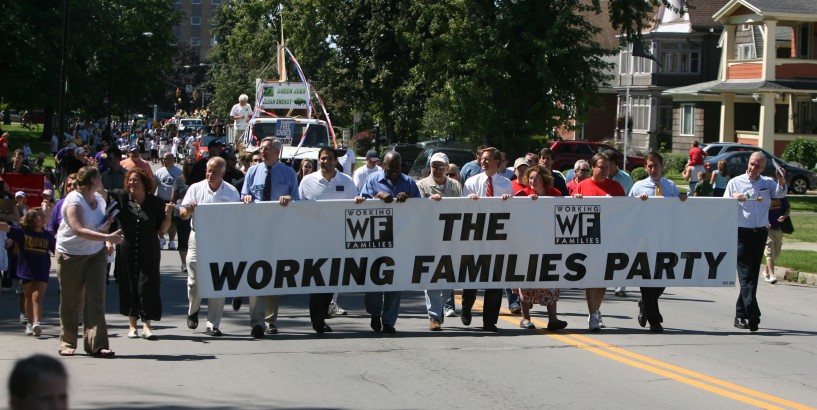A few items you might have missed about politics around here:
• New York Democrats ventured to Westchester County last week for a state committee meeting that overwhelmingly sought to end fusion voting and candidates running for office on more than one party line. The move is significant, since the state Democratic Party usually reflects the views of its high, exalted, mystic ruler – Gov. Andrew M. Cuomo.
The party’s resolve to end New York’s status as one of only a handful of states allowing fusion might normally be considered final. Indeed, Democrats now rule over all of New York’s Capitol.
But the governor has taken no position on the issue, and it is not among the more than two dozen campaign finance and election reform measures he included in the budget. Still, 26 Senate Democrats (including Buffalo’s Tim Kennedy) last week asked Majority Leader Andrea Stewart-Cousins to omit any end-to-fusion measure in the budget. Translation: We support one of those important minor parties – Working Families – threatened by ending fusion.
The Senate Democrats’ letter underscores the state of New York politics in these still-early days of Democrats ruling Albany. They have dispatched Republican influence from the Capitol, and championed a slew of new and liberal measures. Now Senate Dems are emerging as a power in their own right.
They oppose ending fusion. The governor is ambivalent despite the stand of his own Democratic Party. It appears the status quo will remain – at least for now.
• Also from last week’s state Democratic conclave, Cuomo issued a “come on over to the house afterward” invite to many of those in Rye Brook for a reception – 143 miles north at the Governor’s Mansion in Albany – to honor Byron Brown, the outgoing chairman and mayor of Buffalo. The unexpected January change of leaders that reinstalled Jay Jacobs (the Nassau County chairman who had previously led state Dems under Cuomo) orchestrated by the governor proved awkward, unceremonious, and prompted more questions than answers.
The mayor, no doubt, appreciated last week’s gesture.
• Speaking of the mayor, the unofficial long-term mantra around City Hall these days is “strive for five,” and we don’t mean the old Wegmans slogan for daily fruits and vegetables. The next mayoral election is set for 2021, but Brown appears intent to not only equal Jim Griffin’s record of four terms as mayor of Buffalo, but even breaking it with an unprecedented five.
• New York continues to adapt to a new political calendar, which significantly advances when candidates declare, circulate designating petitions, raise money and hit the campaign trail.
Many changes now loom for State Supreme Court candidates, who used to be nominated by judicial conventions in late September. Former Erie County Republican Chairman Bob Davis, who notched his share of Supreme Court victories, used to lament the negatives of such a short campaign season for judges. They were forced to make their case throughout the eight counties of Western New York in the only effective way possible during the six or seven weeks before Election Day – on television. And that might cost $150,000.
The new calendar calls for judicial nominating conventions in July. That at least allows for longer campaigns for judge candidates, but the consequences of raising money and wrangling the controversial process remain to be seen.
• Still on the new calendar, you could formerly count as a rite of campaign season former Legislator Lynn Marinelli honing her considerable retail political skills at front doors in North Buffalo and the Town of Tonawanda. She and others like her would often linger on the porch during those balmy evenings to visit and talk about “stuff.”
But the new calendar brought candidates to your door for petition signatures starting Feb. 26. And few voters are lingering, let alone opening their doors in the sub-freezing temperatures. And where do they get pens that don’t freeze anyway?









